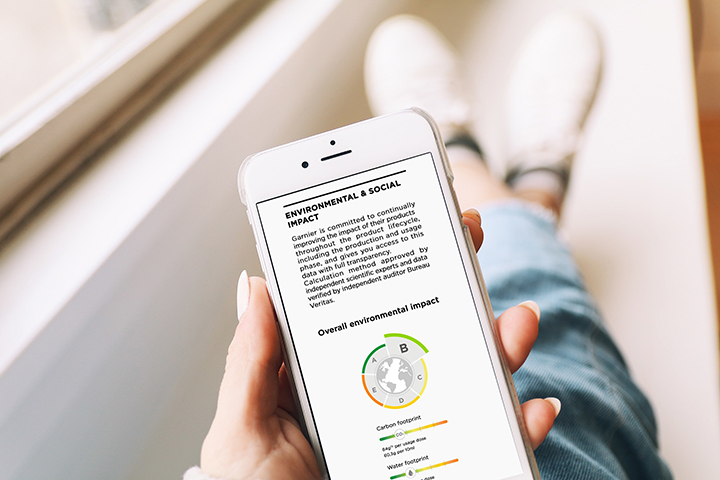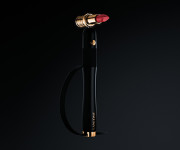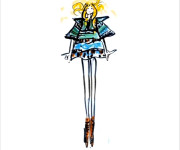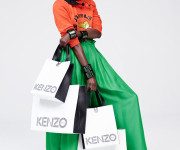L’Oréal USA today announced the roll out of L’Oréal’s Product Impact Labeling System in the United States. The initiative, first launched in France in 2020, gives consumers the relative environmental impact of their product compared to other L’Oréal products in the same category. Products are given a ranking on a scale from A to E by considering 14 planetary impact factors such as greenhouse gas emissions, water scarcity, ocean acidification, and impact on biodiversity, measured at every stage of a product’s life cycle—from ingredients to packaging, manufacturing process, transport and ultimately use and disposal.
“L’Oréal’s Product Impact Labeling system is a core component of the L’Oréal for the Future program, which outlines our sustainability commitments for 2030. Its rollout in the United States has the power to help change consumer behaviour and, therefore, accelerate the beauty industry’s progress toward greater sustainability,” said Marissa Pagnani McGowan, Chief Sustainability Officer for North America. “This comes at a time when sustainability is increasingly becoming a focus for more American consumers. Using principles of environmental science, this tool will empower consumers, support more informed purchasing decisions and foster a culture of greater brand transparency.”
Alongside the announcement, L’Oréal USA revealed the findings of a new study conducted in partnership with Morning Consult, which surveyed 2,000 American adults. Key findings include:
– More than half of Americans (54%) expect to find information about sustainability-related factors on company websites.
– Most Americans are concerned with at least one of the pre-determined environmental impacts. Human destruction of various environments is the most recognized issue at over 50%, followed by water scarcity at 43%, air pollution like dust and dirt at 37%, and ozone depletion at 35%.
– Nearly 60% of Americans believe they have become more sustainable in the past year.
“The survey results show that consumers have clear expectations for sustainability—a critical source of innovation for our teams, from the supply of raw materials to the composition of our formulas. To meet their expectations, we set action plans to improve the environmental profile of lower-ranked products,” said Sanford Browne, President, Research & Innovation for North America. “With our leadership in green sciences, we can leverage cutting-edge processes like biotechnology, green chemistry, and extraction to reveal new dimensions of product performance and reduce our environmental footprint, compared to traditional methods. By 2030, our goal is for 100% of our products to incorporate into their design improvements in formulas, production, packaging and other aspects that help reduce their impact compared to previous generations of products.”
Pioneered by Garnier’s haircare products, the Product Impact Labeling system will roll out progressively across L’Oréal’s brand portfolio including Kiehl’s, L’Oréal Paris, Redken and CeraVe. Following the ingredient list, consumers can find the Product Impact Label of Garnier haircare products on the product information webpage.
Grounded in global standards for environmental science and life-cycle analysis, the methodology behind the Product impact labelling system was co-developed with 11 international and independent experts and scientists between 2014 and 2016. The independent auditor Bureau Veritas has verified the application of L’Oréal’s methodology and the accuracy of our data, issuing a favourable assessment in March 2022 (Bureau Veritas certificate). L’Oréal’s methodology aligns with the European Commission’s Product Environmental Performance recommendations.
L’Oréal will continue to improve its best practices on transparency and sustainable consumption as part of its sustainability commitments for 2030, L’Oréal for the Future, and the 2021 “EU Green Consumption Pledge.” The company has committed to sharing the learnings of the impact labelling initiative with the 60 members of the EcoBeautyScore Consortium, aiming to develop an industry-wide environmental impact assessment and scoring system for cosmetics products. L’Oréal has committed to transitioning from its own product impact labelling to the EcoBeautyScore once it becomes available in late 2023.







